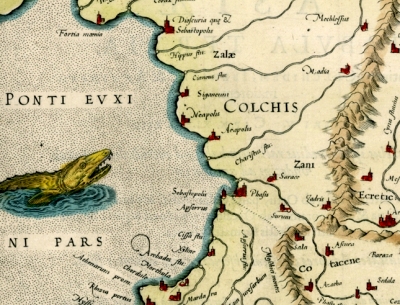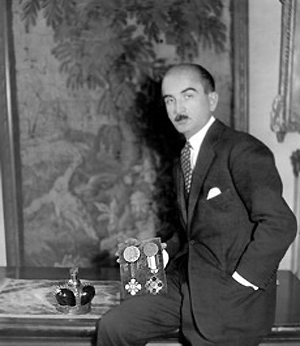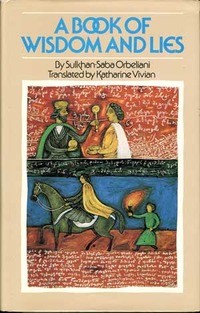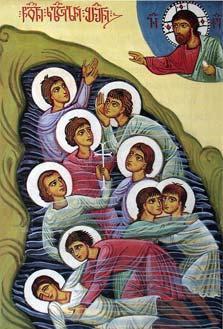

|
The Kartvelologist The Kartvelologist” is a bilingual (Georgian and English) peer-reviewed, academic journal, covering all spheres of Kartvelological scholarship. Along with introducing scholarly novelties in Georgian Studies, it aims at popularization of essays of Georgian researchers on the international level and diffusion of foreign Kartvelological scholarship in Georgian scholarly circles. “The Kartvelologist” issues both in printed and electronic form. In 1993-2009 it came out only in printed form (#1-15). The publisher is the “Centre for Kartvelian Studies” (TSU), financially supported by the “Fund of the Kartvelological School”. In 2011-2013 the journal is financed by Shota Rustaveli National Science Foundation. |
COLCHIS IN THE FIRST MILLENNIUM BC: ORIENTAL TRENDS
keywords:Colchis, Mzetamze, Luristan, the Achaemenids, Chibati. Category: SCHOLARLY STUDIES Authors: Yasuhiro Kojima The Unknown George (Giorgi) Papashvily
George (Giorgi) Papashvily is entered in such serious publications as Who’s Who in American Arts, as well as Who’s Who in American Literature of the 20th century. In Soviet space Papashvily belonged to “banned culture.” In parallel to this there also was the phrase: “unknown culture”. Although rarely, yet opportunities arose of familiarizing oneself with this culture. keywords:Giorgi Papashvily, Hellen Waite Papashvily, Georgian emigrant Category: CHRONICLE OF EVENTS Authors: Yasuhiro Kojima Katharine Vivian (1217-2010)
Katharine Vivian was born in October 1917. In 1939 she married Anthony Ashton, who later became a well-known statesman. Katharine graduated from Sorbonne University, majoring in French civilization. Initially, she took up journalism. During World War Two she served at the Belgian Embassy in London. After the War she continued her studies in French and English literature and philosophy. keywords:Katharine Vivian, “The Man in the Panther Skin”, “The Book of Wisdom and Lies”, the “Georgian Chronicle”. Category: KARTVELOLOGISTS Authors: Yasuhiro Kojima The Oldest Georgian Hymn in “The Nine Martyred Children of Kola”
As the author of “The Nine Martyred Children of Kola” notes, before baptism the children were not allowed to enter the church. Therefore the church in the village of Kola had the form of a cell and it didn’t have a porch, the place for staying of catechumens. This must have taken place in the 2nd -3rd centuries.
keywords:hymn, “The Nine Martyred Children of Kola”, hagiography Category: SCHOLARLY STUDIES Authors: Yasuhiro Kojima
Kartvelian Folktales in German
keywords:Heinz Fähnrich, folktales, Georgia, Caucasus Category: CHRONICLE OF EVENTS Authors: Yasuhiro Kojima |
Categories Journal Archive |



 Oriental impulses are already felt in Colchian culture of the early 1st millennium BC., which, as is known, is attested by the Hasanlu-type daggers (T. Mikeladze). Similar impulses are seen in South Georgia where a dagger, apparently made in Luristan and typical of Calmayer 31-35 (Neo-Babylonian) burials of the 7th-6th c (Mzetamze), has been discovered. The same possibility is underlined by the fact of placing shin rings in the burial which, besides Georgia, is attested in Luristan as well. In the Achaemenid period the territory of present-day Colchis was divided into two parts: the territory of the Colchian kingdom proper, south of the Rioni river (G. Melikishvili), addressed entirely to the Greek world, and Shida Kartli, more or less oriented to the Achaemenid world (O. Lordkipanidze), hence the Achaemenid or “Achaemenized” import and traditions are concentrated here. However, more westward, in v. Chibati, a bronze Achaemenid bit was found by chance, the artistic level of its execution is quite exceptional (the 5th-4th c BC.). The western boundary of Achaemenid interests in the Caucasus is the line joining Sairkhe – Vani – Atsquri - r. Chorokhi. Weak Achaemenid traditions are preserved at Vani of the turn of the 4th-3rd c BC, while from the 3rd c BC, rather weak Hellenistic influence is attested to over the entire territory of Colchis (barring the Hellenized cities of Vani and Eshera).
Oriental impulses are already felt in Colchian culture of the early 1st millennium BC., which, as is known, is attested by the Hasanlu-type daggers (T. Mikeladze). Similar impulses are seen in South Georgia where a dagger, apparently made in Luristan and typical of Calmayer 31-35 (Neo-Babylonian) burials of the 7th-6th c (Mzetamze), has been discovered. The same possibility is underlined by the fact of placing shin rings in the burial which, besides Georgia, is attested in Luristan as well. In the Achaemenid period the territory of present-day Colchis was divided into two parts: the territory of the Colchian kingdom proper, south of the Rioni river (G. Melikishvili), addressed entirely to the Greek world, and Shida Kartli, more or less oriented to the Achaemenid world (O. Lordkipanidze), hence the Achaemenid or “Achaemenized” import and traditions are concentrated here. However, more westward, in v. Chibati, a bronze Achaemenid bit was found by chance, the artistic level of its execution is quite exceptional (the 5th-4th c BC.). The western boundary of Achaemenid interests in the Caucasus is the line joining Sairkhe – Vani – Atsquri - r. Chorokhi. Weak Achaemenid traditions are preserved at Vani of the turn of the 4th-3rd c BC, while from the 3rd c BC, rather weak Hellenistic influence is attested to over the entire territory of Colchis (barring the Hellenized cities of Vani and Eshera). The paper deals with the Georgian born well-known American sculptor and writer George (Giorgi) Papashvily. His works are preserved in state museums and private collections. His book “Anything Can Happen”, written in co-authorship with his wife Hellen Waite Papashvily, was acknowledged a best-seller and called an unprecedented event: George Papashviliy’s works constitute a landmark in the history of Georgian-American culture.
The paper deals with the Georgian born well-known American sculptor and writer George (Giorgi) Papashvily. His works are preserved in state museums and private collections. His book “Anything Can Happen”, written in co-authorship with his wife Hellen Waite Papashvily, was acknowledged a best-seller and called an unprecedented event: George Papashviliy’s works constitute a landmark in the history of Georgian-American culture. The name of the well-known British Kartvelologist of the twentieth century Katharine Vivian today belongs to history. Beginning with the 1970s her contacts with Georgians were very close, enjoying high respect. She took up with honour the work of her predecessor Marjory Wardrop, shouldering the translation and study of landmarks of Georgian literature into English. Her activity contributed much to the process of integrating Georgian culture into European space.
The name of the well-known British Kartvelologist of the twentieth century Katharine Vivian today belongs to history. Beginning with the 1970s her contacts with Georgians were very close, enjoying high respect. She took up with honour the work of her predecessor Marjory Wardrop, shouldering the translation and study of landmarks of Georgian literature into English. Her activity contributed much to the process of integrating Georgian culture into European space. The determination of the date of compilation of “The Nine Martyred Children of Kola” always gave birth to differences of opinions in Georgian scholarship. In the recent period the opinion that “The Nine Martyred Children of Kola” was written in the 2nd -3rd centuries is becoming popular. In support of this opinion I argue that dressing the children in white robes, their stepping down into the stream, singing of an improvised hymn by the priest might be characteristic of the church service practice of the 2nd-3rd centuries. It is difficult to define whether the hymn was translated from any language, or the author improvised it? It is clear that the translator must have based himself on the nature of the Georgian language, versification of that time, or hymn or form of a pagan hymn. The fact is that the hymn is of rhythmic character. I divided it into lines.
The determination of the date of compilation of “The Nine Martyred Children of Kola” always gave birth to differences of opinions in Georgian scholarship. In the recent period the opinion that “The Nine Martyred Children of Kola” was written in the 2nd -3rd centuries is becoming popular. In support of this opinion I argue that dressing the children in white robes, their stepping down into the stream, singing of an improvised hymn by the priest might be characteristic of the church service practice of the 2nd-3rd centuries. It is difficult to define whether the hymn was translated from any language, or the author improvised it? It is clear that the translator must have based himself on the nature of the Georgian language, versification of that time, or hymn or form of a pagan hymn. The fact is that the hymn is of rhythmic character. I divided it into lines.  The well-known German Kartvelologist Heinz Fähnrich has regularly edited Georgian folklore in the form of numerous books: Epic of Amirani (1978), Georgian folktales (1963, 1980, 1995), Georgian tales (1984), Georgian tales and legends (1998), Svan folktales (1992), Laz folktales (1995), Mingrelian tales (1997), lexicon of Georgian Mythology (1999) etc. “Behind Nine Mountains. Folktales of Georgians” constitutes one more corpus of Georgian folktales in German [1]. More than 170 Georgian folktales from Georgian, Mingrelian, Laz and Svan folklore are collected in the book: magic, novelistic and animal tales with epilogue, lexicon and bibliography. Folklore and literary sources are given in the appendix as well (pp. 636-645). Specific Georgian words which are used in the German text without translation are also explained at the end of the book, for example, the names of musical instruments, money, traditional food, ethnographic things, nicknames, toponymy etc.
The well-known German Kartvelologist Heinz Fähnrich has regularly edited Georgian folklore in the form of numerous books: Epic of Amirani (1978), Georgian folktales (1963, 1980, 1995), Georgian tales (1984), Georgian tales and legends (1998), Svan folktales (1992), Laz folktales (1995), Mingrelian tales (1997), lexicon of Georgian Mythology (1999) etc. “Behind Nine Mountains. Folktales of Georgians” constitutes one more corpus of Georgian folktales in German [1]. More than 170 Georgian folktales from Georgian, Mingrelian, Laz and Svan folklore are collected in the book: magic, novelistic and animal tales with epilogue, lexicon and bibliography. Folklore and literary sources are given in the appendix as well (pp. 636-645). Specific Georgian words which are used in the German text without translation are also explained at the end of the book, for example, the names of musical instruments, money, traditional food, ethnographic things, nicknames, toponymy etc.